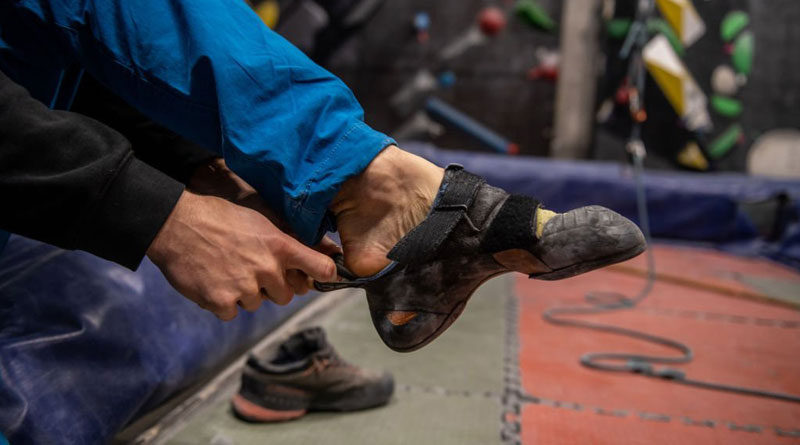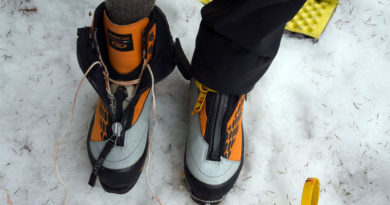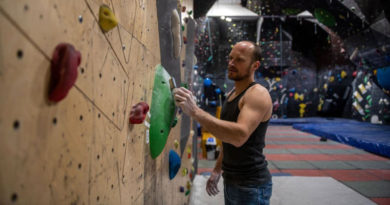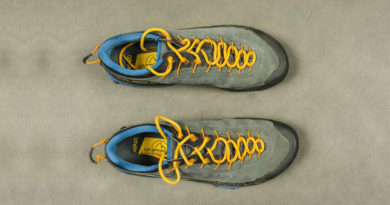Learn How to Fit Your Climbing Shoes Like a Pro!
Climbing shoes are an essential piece of gear for any climber, regardless of experience level. The right climbing shoes can significantly improve your performance by allowing you to grip small edges and climb with precision. Improperly fitting climbing shoes, on the other hand, can cause discomfort, blisters, and even injuries. That is why it is critical to properly fit your climbing shoes.
In this article, I’ll go over some essential tips and tricks for finding the perfect fit in your climbing shoes. I will also discuss some common fit issues and solutions. Whether you’re a beginner or a seasoned climber, understanding how to properly fit climbing shoes will make a significant difference in your climbing experience.
Measure your Foot
The first step in fitting climbing shoes is to accurately measure your feet. This will help you determine the appropriate shoe size and style that will work best for you. Here are some tips for measuring your feet:
- Measure Both Feet: It’s important to measure both feet as they may be slightly different sizes.
- Measure Your Feet At The End Of The Day: Feet tend to swell throughout the day, so it’s best to measure them at the end of the day when they are at their largest.
- Measure The Length And Width: Use a tape measure or ruler to measure the length and width of your foot. Place your foot on a piece of paper and mark the furthest points at the heel and toe. Measure the distance between these two points for the length, and the distance between the two widest points for the width.
- Determine Your Foot Shape And Arch Type: Knowing your foot shape and arch type can help you choose the right climbing shoe style for your needs. Flat feet may require more support, while high arches may benefit from a more flexible shoe.
Once you’ve measured your feet, you can use them to determine the proper climbing shoe size. Remember that climbing shoe sizes often differ from street shoe sizes, and a snug fit is usually recommended for optimal performance. In the following section, we’ll go over some pointers for picking the right size climbing shoe.
Consider Different Styles of Climbing Shoes
When choosing a climbing shoe, consider the style of climbing you’ll be doing most often and the level of comfort and performance you need. Trying on different styles and sizes can help you find the perfect fit for your foot shape and climbing needs.
Neutral Shoes
Neutral shoes are designed for all-around climbing and are a good choice for beginners or those who climb less frequently. They typically have a flatter sole and a more relaxed fit. This makes them comfortable for longer sessions on the wall. Neutral shoes are also a good choice for climbers who prefer crack climbing or other types of climbing that require more foot flexibility.
Aggressive Shoes
Aggressive shoes are designed for steep, overhanging routes and boulder problems. They have a downturned shape and a more pointed toe box. This allows for better edging and precision on small footholds. Aggressive shoes can be uncomfortable for longer sessions, so you can use them for shorter, more intense climbs.
Technical Shoes
Technical shoes are designed for vertical or slightly overhanging routes and feature a stiffer sole than neutral shoes. They have a moderate downturn and a more pointed toe-box than neutral shoes, allowing for better precision on small footholds. Technical shoes are a good choice for intermediate to advanced climbers who want a balance of comfort and performance.
Approach Shoes
Approach shoes are designed for hiking and scrambling to the base of a climb. They have a more durable and supportive sole than climbing shoes and a more relaxed fit for comfort during long approaches. You can also use approach shoes for easy to moderate climbs that don’t require specialized climbing shoes.
Choose the Right Size
Choosing the right size is crucial when it comes to climbing shoes because a good fit is necessary for optimal performance, comfort, and safety while climbing. Climbing shoes should fit snugly, but not painfully tight. Here are some tips to help you find the perfect fit:
- Understand Climbing Shoe Sizing: Climbing shoes are typically sized smaller than street shoes, and a snug fit is recommended. Many climbers choose shoes that are one to two sizes smaller than their street shoe size.
- Consider Brand Recommendations: Different climbing shoe brands may have their own sizing guidelines, so it’s worth checking their website or consulting with a salesperson to ensure you get the right size.
- Try On Multiple Sizes: Even if you think you know your climbing shoe size, it’s always a good idea to try on multiple sizes to ensure the best fit. Remember that a snug fit is important for optimal performance, but you should also avoid any discomfort or pain.
- Think About The Type Of Climbing You’ll Be Doing: The type of climbing you’ll be doing can also affect the shoe size and style you choose. For example, if you’ll be doing more technical climbing, a tighter fit may be necessary, while a looser fit may be more comfortable for longer climbs.
- Consider The Materials: Climbing shoes can be made from a variety of materials, such as leather or synthetic materials. Keep in mind that leather shoes may stretch over time, while synthetic shoes may not.
By considering these factors and trying on multiple sizes, you can find the perfect climbing shoe size for your needs. In the next section, I’ll discuss different climbing shoe styles and how to choose the right one for you.
Common Fit Issues and Solutions
Even with careful measurement and trying on multiple sizes and styles, you may still experience some fit issues with your climbing shoes. Here are some common fit issues and their solutions:
Toe Discomfort
Toe discomfort is a common issue, especially with aggressive shoes. If your toes are curling or cramped in the toe box, try a larger size or a shoe with a wider toe box. You can also try adjusting the laces or straps to provide more room in the toe box.
Heel Slippage
Heel slippage can occur when the heel of the shoe is too loose. It causes the foot to move around inside the shoe. You can address this by adjusting the laces or straps. It will provide a more secure fit. Y can also try a different size or style of shoe that better fits your heel shape.
Arch Discomfort
Arch discomfort can occur if the shoe doesn’t provide enough support or if it’s too tight in the midfoot area. If you have high arches, look for shoes with a more curved shape or a higher volume in the midfoot. You can also try adding an aftermarket insole for more support.
Hotspots or Blisters
Hotspots or blisters can occur when there’s friction between the foot and the shoe. The main cause of hotspots is a poorly fitting shoe or a shoe that’s too tight in certain areas. Make sure to try on shoes with the socks you plan to wear while climbing and consider adding padding to areas that are prone to blisters.
Overly Tight or Painful Fit
An overly tight or painful fit can occur when the shoe is too small or the foot is crammed into the shoe. If you’re experiencing pain or discomfort that doesn’t improve with use, try a larger size or a different style of shoe. You can also consider using a shoe stretcher or consulting with a salesperson or climbing shoe specialist for additional guidance.
Conclusion
Climbing shoes that fit properly are critical for comfort, performance, and safety. You can find the perfect fit for your foot shape by taking certain things into account. These things include time to measure your foot, different styles of climbing shoes, and sizes and styles. You can overcome toe discomfort, heel slippage, arch discomfort, hotspots, or blisters by adjusting the laces or straps. Remember to also maintain and care for your climbing shoes by avoiding unnecessary wear and tear. Clean them regularly and allow them to dry thoroughly between uses. Overall, finding the right climbing shoe may require some trial and error. But the effort is well worth it for the improved comfort and performance they provide on the wall. Have fun climbing!




